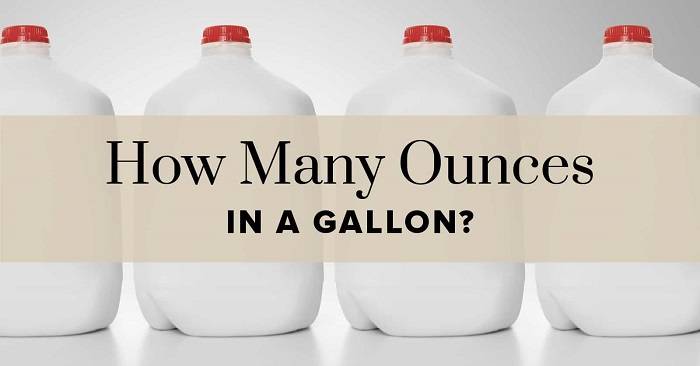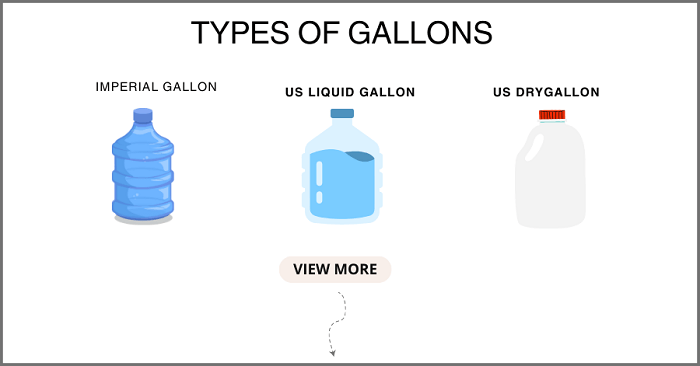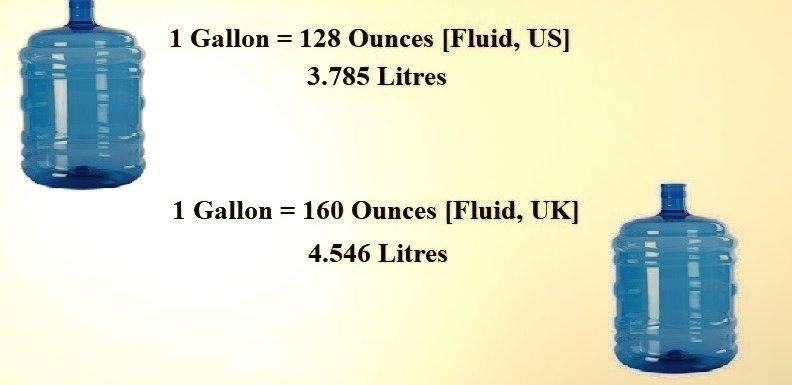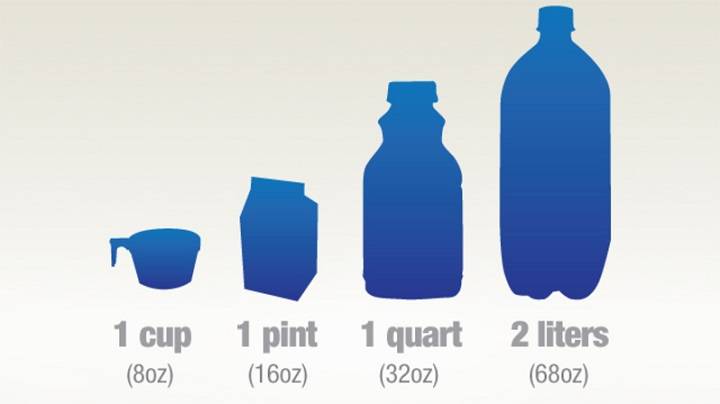Understanding measurement conversions is essential in various aspects of life, especially in cooking, baking, and even scientific endeavors. One common conversion people often need to make is between gallons and ounces. This comprehensive guide will explore how many ounces are in a gallon, delve into the differences between US and Imperial measurements, and provide practical applications and tips for accurate conversions.
Whether you’re following a recipe, preparing a large batch of a beverage, or working on a DIY project, knowing how to convert gallons to ounces can be incredibly useful. This guide will provide detailed information on the number of ounces in a gallon, highlight the differences between measurement systems, and offer practical tips for making accurate conversions.
Understanding Gallons and Ounces

What is a Gallon?
A gallon is a unit of volume commonly used in the United States and the United Kingdom. However, the US and UK gallons are not the same, leading to differences in their respective ounce equivalents.
- US Gallon: The US gallon is used in the United States and is defined as 231 cubic inches or approximately 3.785 liters.
- Imperial Gallon: The Imperial gallon is used in the United Kingdom and is defined as 277.42 cubic inches or approximately 4.546 liters.
What is an Ounce?
An ounce can refer to a unit of volume (fluid ounce) or a unit of weight (avoirdupois ounce). In this context, we are discussing fluid ounces, which measure volume.
- US Fluid Ounce: The US fluid ounce is used in the United States and is defined as 1/128th of a US gallon, approximately 29.573 milliliters.
- Imperial Fluid Ounce: The Imperial fluid ounce is used in the United Kingdom and is defined as 1/160th of an Imperial gallon, approximately 28.413 milliliters.
How Many Ounces are in a Gallon?
US Gallon to Ounces
In the United States, the conversion between gallons and ounces is straightforward:
- 1 US gallon = 128 US fluid ounces
This means that if you have 1 US gallon of liquid, it is equivalent to 128 US fluid ounces.
Imperial Gallon to Ounces
In the United Kingdom, the conversion is slightly different due to the larger size of the Imperial gallon:
- 1 Imperial gallon = 160 Imperial fluid ounces
This means that if you have 1 Imperial gallon of liquid, it is equivalent to 160 Imperial fluid ounces.
Comparison
The difference between the US gallon and the Imperial gallon highlights the importance of knowing which system you are using. The Imperial gallon is larger than the US gallon, resulting in a different number of fluid ounces.
- 1 US gallon = 128 US fluid ounces
- 1 Imperial gallon = 160 Imperial fluid ounces
Practical Applications of Gallon to Ounce Conversions

Cooking and Baking
In cooking and baking, precise measurements are crucial to achieving the desired results. Recipes from different countries may use different measurement systems, making it important to understand conversions. For example, if a recipe calls for 1 gallon of liquid, knowing whether it’s a US or Imperial gallon is essential.
Preparing Beverages
When making large batches of beverages, such as lemonade or punch, knowing how many ounces are in a gallon helps ensure the correct proportions. For instance, if a recipe calls for 1 US gallon of water, you would use 128 US fluid ounces.
Home Brewing
Home brewers often work with large volumes of liquid, making gallon to ounce conversions critical. Accurate measurements help achieve the desired flavor and consistency in the final product.
Gardening and Home Improvement
In gardening, measurements are often required for mixing fertilizers, pesticides, or herbicides. Similarly, in home improvement projects, knowing how many ounces are in a gallon can help with mixing paints or other solutions accurately.
Tips for Accurate Conversions
Use the Right Tools
Using the right tools ensures accurate measurements. Here are some tools that can help:
- Measuring Cups and Spoons: These tools are standard for measuring liquids in smaller quantities.
- Graduated Pitchers: These pitchers have measurement markings and are ideal for larger volumes.
- Digital Scale: A digital scale with fluid ounce and gallon settings can provide precise measurements.
Follow Proper Measuring Techniques
Using proper measuring techniques ensures accuracy. Here are some tips:
- Flat Surface: Place measuring cups and pitchers on a flat surface to ensure accurate readings.
- Eye Level: Measure liquids at eye level to avoid parallax errors.
- Tare Function: Use the tare function on digital scales to zero out the weight of the container before adding the liquid.
Be Aware of Measurement System Differences
Always be aware of the measurement system used in your recipe or project. Converting between US and Imperial gallons and fluid ounces requires understanding the differences between these systems.
Common Mistakes and How to Avoid Them
Confusing Volume and Weight
One common mistake is confusing fluid ounces (volume) with ounces (weight). Remember that fluid ounces measure volume, while ounces measure weight. The two are not interchangeable without considering the density of the substance.
Using the Wrong Measurement System
Using the wrong measurement system can lead to inaccurate conversions. Always double-check whether your recipe or project uses the US or Imperial system.
Not Leveling Liquid Measurements
Not leveling liquid measurements can result in inaccurate measurements. Always measure liquids at eye level and on a flat surface to ensure accuracy.
Converting Between Different Units

Cups to Ounces
Here are some common conversions for cups to ounces:
- 1 US cup = 8 US fluid ounces
- 1 Imperial cup = 10 Imperial fluid ounces
Pints to Ounces
Here are some common conversions for pints to ounces:
- 1 US pint = 16 US fluid ounces
- 1 Imperial pint = 20 Imperial fluid ounces
Quarts to Ounces
Here are some common conversions for quarts to ounces:
- 1 US quart = 32 US fluid ounces
- 1 Imperial quart = 40 Imperial fluid ounces
Liters to Ounces
Here are some common conversions for liters to ounces:
- 1 liter ≈ 33.814 US fluid ounces
- 1 liter ≈ 35.195 Imperial fluid ounces
Practical Examples
Making a Large Batch of Soup
When making a large batch of soup, knowing the conversion between gallons and ounces is essential. If a recipe calls for 2 US gallons of broth, you need to know that it equals 256 US fluid ounces (2 gallons x 128 ounces per gallon).
Brewing Beer
Homebrewing beer requires precise measurements of liquid ingredients. If a recipe calls for 3 Imperial gallons of water, you need to convert this to Imperial fluid ounces: 3 gallons x 160 ounces per gallon = 480 Imperial fluid ounces.
Mixing Paint
When mixing paint for a large project, understanding gallon to ounce conversions ensures you mix the correct amount. For example, if you need 5 US gallons of paint, this equals 640 US fluid ounces (5 gallons x 128 ounces per gallon).
Related Post:
Dallas Mavericks vs Clippers: Comprehensive Player Stats Breakdown
Posiciones de la Premier League: Clasificación Actualizada y Análisis Detallado
OKC Thunder vs Dallas Mavericks: In-Depth Player Stats and Match Analysis
Understanding how many ounces are in a gallon is a crucial skill for various activities, from cooking and baking to home improvement and scientific projects. The key is knowing whether you are using the US or Imperial system, as the two are not interchangeable.
By using the right tools, following proper measuring techniques, and being aware of the differences between measurement systems, you can ensure accurate and precise conversions. This knowledge will help you navigate recipes, projects, and daily activities with confidence and accuracy.
In summary, mastering gallon to ounce conversions enhances your ability to follow recipes, prepare large batches of food or beverages, and complete DIY projects with precision. Keep this guide handy as a reference, and you’ll be well-equipped to handle any measurement challenge that comes your way. Happy measuring!

